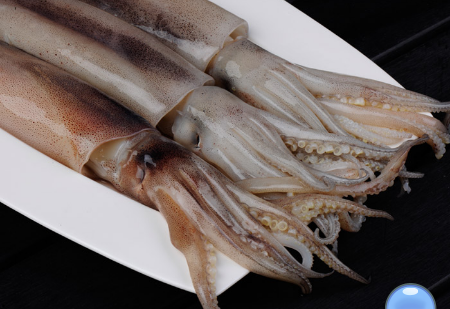1. Current Status of the Global Squid Industry
The global squid industry stands as one of the most dynamic sectors in seafood trade. Driven by sustained consumer demand for high-protein, low-fat, and versatile squid products, the global squid market size is projected to exceed $13 billion in 2024. However, this growth is accompanied by multiple challenges, including squid supply pressure, price volatility, resource depletion, and stricter regulations.
2. Squid Key Species and Production Landscape
Three Pillar Species of squid
Global squid fishing primarily focuses on three species, accounting for 3-5 million tons of annual catches of squid:
Argentine Illex squid (Illex argentinus): Distributed in the southwest Atlantic, with the Argentine Exclusive Economic Zone (EEZ) as its core fishing ground.
Peruvian giant squid (Dosidicus gigas): Widespread in the southeast Pacific waters along the coasts of Peru and Ecuador.
Japanese flying squid (Todarodes pacificus): Concentrated in the northwest Pacific around Japan, South Korea, and China.
Major Squid Producing Countries
China: The world’s largest squid fishing nation, with its distant-water fleets active in Latin America, West Africa, and the Pacific, and the high-seas jigging fleet continuously expanding.
Argentina: Strictly controls EEZ resources and implements a rigorous seasonal fishing ban.
Peru/Ecuador: Rich in resources with growing processing capabilities, though dominated by artisanal fishing vessels.
Japan/South Korea: Key operators in the North Pacific, with strong domestic consumption demand.
Spain (Galicia): Both a fisher and a major importer-processor, connecting to the European market.

3. Sustained Squid Price Increase in Q2 2025
As of Q2 2025, squid prices rose 15%-20% year on year, driven by:
Tighter resource regulations: Reduced quotas and extended fishing bans of squid.
Rising operational costs of catching squid: Higher oil prices and labor expenses.
Robust Chinese processing demand of squid: Import-driven demand for whole squid and processed products.
Current average prices: $2,600/ton for shortfin squid, and over $2,000/ton for ex-factory Humboldt squid.
4. Processing and Consumption of squid: Core Hubs of the Global Supply Chain
Squid Processing Centers
Zhoushan, China: The global squid processing hub, accounting for 70% of China’s distant-water squid catches. With a cold storage capacity of 520,000 tons squid, it has formed an integrated chain of fishing-processing-logistics of squid, established data warehouses to monitor squid production and sales, and promoted online transactions through supply chain integration. It also innovates value-added products like squid tentacle snacks.
Other processing powerhouses: Thailand and Vietnam play vital roles, leveraging low-cost labor to process large volumes of imported raw materials for re-export.
Major squid Importing and Consumption Markets
Processed squid is shipped to key importing and consuming countries for food service and retail markets of squid, including:
The EU (Spain, Italy, France, etc.), driven by Mediterranean cuisine; Japan, due to its sushi culture; the U.S., with rising food service and retail demand; and South Korea, where squid dishes like stir-fries and seasoned dried snacks are popular.
5. Global Squid Industry Faces challenges
Ecological Risks: Lack of scientific management of high-seas resources, with IUU (illegal, unreported, unregulated) fishing (especially in Latin American waters) leading to overexploitation. Countries like Argentina have accused Chinese fishing vessels of forming "floating cities."
Geopolitical Conflicts: South American nations advocate for establishing Regional Fisheries Management Organizations (RFMOs). The South Pacific SPRFMO has initiated Humboldt squid protection measures, but gaps remain in law enforcement and data collection.
Human Rights Controversies: NGOs have exposed labor exploitation in distant-water fleets, pushing for supply chain transparency reforms.


